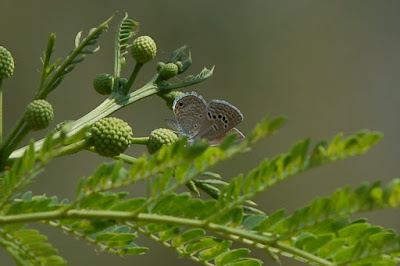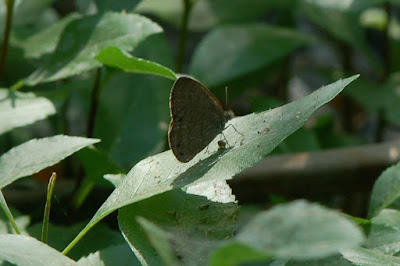So this is me taking advantage of having this blog; I'm going to post things OTHER than butterflies in this post. Why? Well, I figured someone out there might have insight into these other creatures.
This dragonfly was down in southern Texas. I believe it to be either a CARMINE SKIMMER (Orthemis discolor) or a ROSEATE SKIMMER (Orthemis ferruginea). At this point, I'm leaning more towards ROSEATE SKIMMER due to the not-so-red abdomen and the more-purplish thorax:
I'm reluctant to try to ID some of the darners but according to the books I have, there are only a couple possible at Big Bend National Park in western Texas:
Springtime Darner
Shadow Darner (maybe)
Persephone's Darner (maybe)
Arroyo Darner
Blue-eyed Darner
Giant Darner
Common Green Darner
All I can say with this following darner is that I don't think it's a Giant or Common Green. Perhaps it's a Blue-eyed yellow female? Or a out-of-range Shadow?
I have almost no experience with these things... but is this a type of clubtail/snaketail? It was in the lower Rio Grande Valley; here are some possibilities given the range:
Five-striped Leaftail
Ringed Forceptail
Broad-striped Forceptail
Narrow-striped Forceptail
Jade Clubtail
Sulphur-tipped Clubtail
Plains Clubtail
Tamaulipan Clubtail
Russet-tipped Clubtail
Flag-tailed Spinyleg
Eastern Ringtail
Is the ID obvious to someone else out there?
This looks like something similar so I'll include it next. This was also in extreme southern Texas:
I'm guessing this is an anti-climatic EASTERN PONDHAWK?
And a female EASTERN PONDHAWK?
I'm pretty sure I haven't seen this thing before but that's not surprising. I'm going to go out on a decaying limb and call it a THORNBUSH DASHER (Micrathyria hagenii):
Those who know me know that I despise damselflies mostly because I can't identify a bloody thing. Well then, imagine my delight when I saw this damselfly. Surely I could ID it, right? Well, I think so. My thought is that this is an AMERICAN RUBYSPOT (Hetaerina americana):
Moving even further from insects and jumping to a different phylum, here are a couple reptiles from south Texas.
This first one was in Big Bend NP in western Texas. I thought IDing these would be fairly straightforward, but here I am again completely lost. Might this be be a Crevice Spiny Lizard or a Southern Prairie Lizard?
I was pretty sure that this was an Earless Lizard of some sort but now I'm not so sure. It was in extreme southern Texas so in range for Keeled Earless Lizard but I don't see the black lines near the armpit:
I might just be able to ID this one we had in extreme southern Texas. My guess is GREEN ANOLE. We first found it and it was this pale green/yellow:
...and a few minutes later, it was bright green!
This guy was in extreme southern Texas as well. My guess is a female TEXAS SPOTTED WHIPTAIL or some kind of racerunner/skink?
Last but not least, and moving back into insects, here is what-I-presume-to-be a SPRING AZURE from southwest Michigan:
This is a SIX-SPOTTED TIGER BEETLE also from southwest Michigan (thanks AB):
I'll leave you with this strange thing that landed on Ashley's hand in southern Texas. Pretty tiny; any ideas:



























































